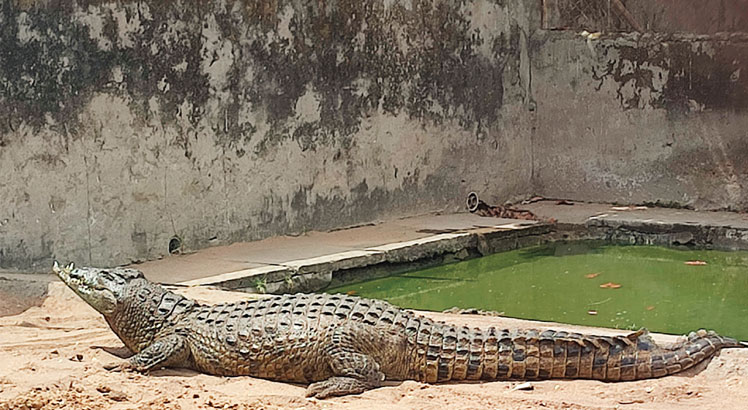Stray to Crocodile Farm
It’s 10am in Salima Town along Lake Malawi. The sun is high and sweltering, a typical summertime along Africa’s third-largest freshwater lake.
Summer offers the adventurous minds limitless places to go.
Do you go swimming in the starry blue waters, bask in the tanning sun on the golden sands or escape to the woodlands of Kuti Wildlife Reserve where zebras, giraffes and wildebeests roam, much to the delight of sightseers?
Even a cold beer would do if it is cooling you crave.
But a road less travelled takes you to Crocodile Farm near Kambiri Resort in Senga Bay.
Here, more than 7 700 fiery reptiles aged up to 65 are caged for their skins, meat and allure.
At the gate, some tourists rest after a 20-minute tour worth K4 000 per head while others jostle for their turn.
“Welcome,” smiling guide Miriam Mhango greets us. “Liquor is prohibited and please avoid noise. Don’t wake the sleeping crocs.”

Mhango, from Rumphi, joined the farm’s staff of about 35 three years ago.
She feeds and cares for the rough-skinned amphibians.
Some of them relax in the water baths and others sleep in the sun.
“When I go in to empty the pools, they flee from the water. We always enter the cages in groups of three or more because beasts are beasts. We can’t take chances,” she explains.
The crocodiles are not violent like their free-range counterparts that maul people.
In Masukambiya Village near Nchalo sugarcane plantation in Chikwawa, half a dozen villagers have lost their limbs to wild crocodiles.
Such snippets would dissuade some people from trekking to the crocodile farm along the palm-fringed lake, the country’s most visited tourist attraction.
But it is not only safe to do so.
It is also worth the adrenaline it triggers throughout the walk in the maze created by mesh wire reminiscent of missionary priests’ fences.
The tour brings visitors face to face with multitudes of crocodiles both squeaking small and hissing huge, growling old and grunting young, sleeping after taking meaty meals and recharging their cold-blooded bodies in the sun.
“Each crocodile eats six to eight chickens a week,” says Mhango. “We give them dead chicken from poultry farms so as not to compete for live ones with human beings. We don’t want to raise the demand and prices for chicken.”
The massive weekly diet partly explains the crocodiles’ dormancy.
“A croc is like a python. When it swallows its prey, it becomes inactive for a week or two until its acidic stomach fully breaks down what it has eaten,” Mhango explains.
Up close, the crocodiles are not postcard beauties, but certainly calm and stunningly nonviolent after taking more than enough meat to mind yours.
“None of them would harm me even if I entered a pen with 10 adults snoring in the open,” Mhango brags. “They just had their meal three days ago,” she says.
The farm reportedly exports about 1 000 hides a year.
“They are extracted from the majority aged three to five years. The remainder is good meat” Mhango explains.
The oldest survivor, nearly twice the age of the 35-year-old seen lying on a sand, was among a pioneer stock translocated from Nkhata Bay.
Now thousands quench the curiosity of tourists who personify how even the most-feared monsters kept in check are ramping up traffic to the lakeside destination.
The crocodile farm presents astonishing photo opportunities plus a breathtaking chance to taste crocodile meat.
Not many leave Mhango without buying some meat at the shop by the gate.
“The white meat is soft, tasty and affordable. Just K4 000 per kilogramme. Our specialists safely remove the toxic bile,” she says.
Yes it is.






One Comment